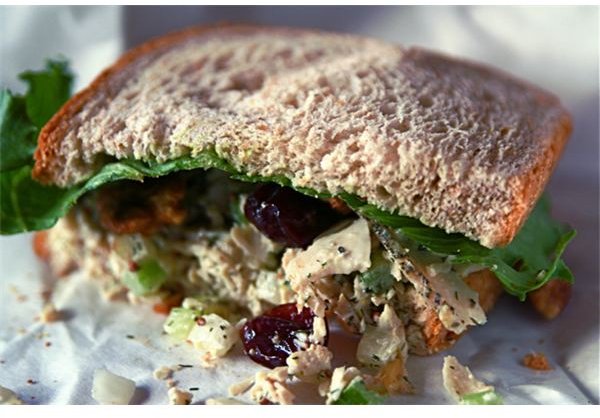How to Plan Your Own Diabetes Weekly Menus
It would be easier if diabetes was a food allergy and all you had to do was avoid a particular type of food. Instead, diabetes is a 24/7 balancing act between food intake and proper blood sugar levels. The first question that often comes to a patient’s mind is, “What food am I allowed to eat?” Fortunately, a diabetes diet is not a gruesome life sentence as some may think. It involves nutritional management, and a balance of healthy eating choices and controlled carbohydrate intake.
Type 2 diabetics who need to lose weight as well as manage their illness face bigger challenges. They are normally advised to limit carbohydrates and ensure calorie control, combined with a proper exercise plan.
Consult a registered dietician who is a CDE (certified diabetes educator), or someone experienced in diabetes management to guide you about food choices and how to plan for your diabetic weekly menus to help you reach your desired weight and cope with your condition.
Three Approaches to Meal Planning
People with diabetes have their distinct nutritional needs. It is important to plan meals individually and not pattern your menu from other patients. Here are common approaches to diabetic weekly menus:
Exchange Meal Plan
In the exchange meal plan, foods are divided into basic groups – fruits, starches, meat, fats, milk, sweets and free foods. In a group, you can see list of foods with the same quantity of carbohydrates, calories and other nutrients. Exchanging or trading of foods within a group is allowed because they have the same nutrient substance and the way they can affect your blood sugar. Consult your dietician on the list of foods and allowed exchanges based on your needs. This meal plan will easily help you maintain your blood sugar within target range.
Carbohydrate Counting Meal Plan
In the carbohydrate counting meal plan, diabetics adjust their insulin intake based on the carbohydrates they eat in a day. The objective here is to balance and keep your daily carbohydrates and insulin intake the same. Among the meal plans, this is the most flexible but may not be the healthiest especially if you are not watching what you are eating. Here are some facts about this meal plan: it can affect our blood sugar level more than the other nutrients; it requires diabetics to monitor their carbs intake each day; and it gives diabetics more flexible day-to-day diet,
Constant Carbohydrate Food Plan
This is probably the easiest among the three and the choice for those you are just starting with meal planning. All you need to do is keep track of your carbohydrate intake each meal and be careful not to go over the allowed amount regulated by your dietician. The key here is consistency; always eat the same amount of carbohydrate content the same every meal, every day.
No matter which meal plan you choose to use, remember to keep a food diary and write down your blood glucose level and carbs intake every day. proper recording of your diet will give your dietician a better picture of your health and which plan and medication schedule works best for you.
Points to Remember:
-

Eat 3 x a day – more if taking diabetic pills or on insulin.
-
Do not skip meals and try to eat at the same hour each day.
-
Stick to water when thirsty. If you really need to have a soda, choose the sugar-free variety.
-
You don’t have to limit these vegetables: Brussels Sprouts, broccoli, cabbage, cauliflower, bean sprouts, yellow or green beans, celery, asparagus, cucumber, lettuce, tomatoes, zucchini, onions, pepper, parsley, radish and spinach.
-
You don’t have to limit these liquids: Water, clear broth, lemon juice, mustard, herbs, spices, salt, pepper, seasonings, vinegar, clear coffee, tea and sugar-free drinks.
-
Avoid: Honey, jelly, jam, pastries, molasses, regular soft drinks, tonic water, syrup, condensed milk, candies, chocolates, iced cakes and sugar.
Benefits of Planning Diabetes Weekly Menu
- Controls insulin/blood sugar
- Reduces medications
- Weight management
- Controls triglyceride and cholesterol levels
- Manages blood pressure
- Avoid skipping meals
- Proper portions
A Healthier New You

A Diabetic diet is the ideal diet for everyone. Focus on whole foods, particularly those that are nutrient-dense and are high in fiber. This diet includes most dairy products, poultry, lean meat, fish, and virtually all plant foods. Keep away from highly processed foods, which are high in sugar and refined flour. This is your opportunity to change your lifestyle and your diet. Discuss your menu with your dietician to ensure that you are getting the most nutrient out of your calories. Even if you don’t have diabetes, take a stab at planning your meal the “diabetic way”. Learn more about diabetes weekly menus and healthy eating; your body will be most thankful and you’ll look and feel wonderful.
Disclaimer
This is not medical advice and is not meant to treat, diagnose, prescribe or cure any ailment. Check with your physician first before following any advice you have read on BrightHub.com. Consult your physician before you start, stop or change anything that has been previously prescribed to you.
Image Credits
- stevendepolo - https://farm4.static.flickr.com/3363/3640270410_a2908fc1b6_o.jpg
- ralph and jenny - https://farm3.static.flickr.com/2557/3802430198_0210919024_z.jpg
- Muffet - https://farm1.static.flickr.com/51/130384035_0f47baddd6_z.jpg
